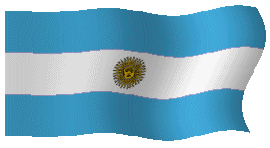
B"H
Jewish  Tours
Tours
 Buenos Aires, Argentina
Buenos Aires, Argentina
ENTRE RÍOS, province in the Argentine Republic and one of the most important centers of Jewish agricultural settlement. In 2005 the Jewish population was estimated at 1,200 families, 550 of them in the capital city of Paraná. Entre Ríos has been the focal point of Jewish settlement in Argentina since the beginning of Jewish immigration to the country. The Jewish Colonization Association (ICA) first purchased land in the province in 1892 and the first settlers came during the same year. Argentina's national census of 1895 indicated that of the 6,085 people who declared their Jewish affiliation 3,880, or about 64%, lived in Entre Ríos. The amount of land in Entre Ríos owned by the Jewish agricultural settlements continued to increase until 1940, when it reached its peak of 571,988 acres.
On the perimeter of the agricultural settlements, Jewish communities began to develop in the towns and later in distant principal cities. A 1909 survey found Jews in seven cities and towns and their number at that time was estimated at 585 in contrast to 9,948 who lived in the Jewish agricultural settlements. Another poll, conducted in 1943, estimated the number of Jews in Entre Ríos at 20,803, of whom 9,266 were engaged in agriculture in the Jewish settlements, 4,695 lived in 17 adjacent villages, and the remainder – 6,842 persons – were settled in 76 towns, villages, and hamlets in the province. As a result of the Jewish agricultural colonization in the province Entre Ríos has such Hebrew and Jewish place names as Carmel, Baron Ginzburg, and Avigdor. Jews in Entre Ríos have had local political importance, a rare circumstance within Argentinian Jewry as a whole. During the first years of settlement the Jewish colonies established in Colón, Uruguay, and Villaguay increased the population of these regions by about 55%. This relative numerical importance, however, was not maintained. The settlements were arenas for Argentinian political struggles which had tragic consequences in 1916–17 when synagogues were destroyed and Torah scrolls desecrated in the Clara colony. In 1921 the Jews of Entre Ríos suffered violent antisemitism – camouflaged as anti-Communism – a phenomenon which increased particularly during the 1930s and 1940s.
The concentration of Jews in rural areas helped to preserve
H. Avni, "Mifalo ha-Hityashevuti shel ha-Baron Hirsch be-Argentinah" (Dissertation, Jerusalem, 1969), includes English summary and bibliography; Jewish Colonization Association, Rapport … (1909).
[Haim Avni]
Source: Encyclopaedia Judaica. © 2008 The Gale Group. All Rights Reserved.
|
Visite nuestro sitio/Visit our home page: |